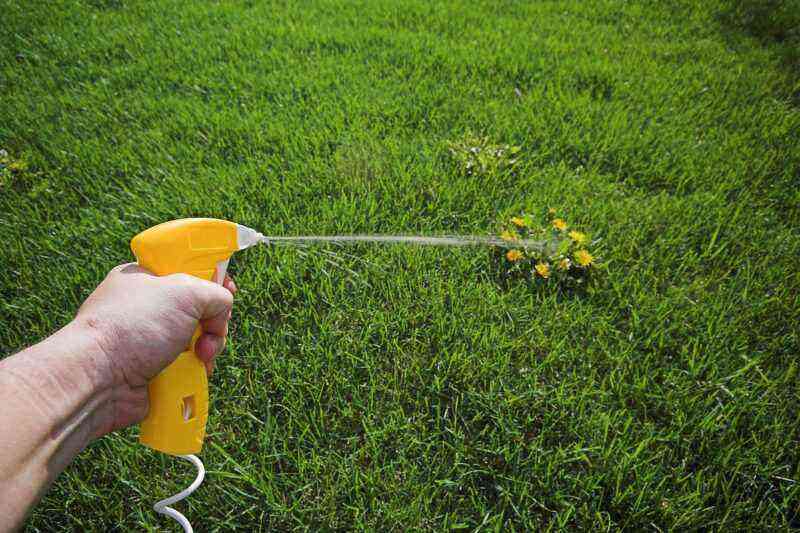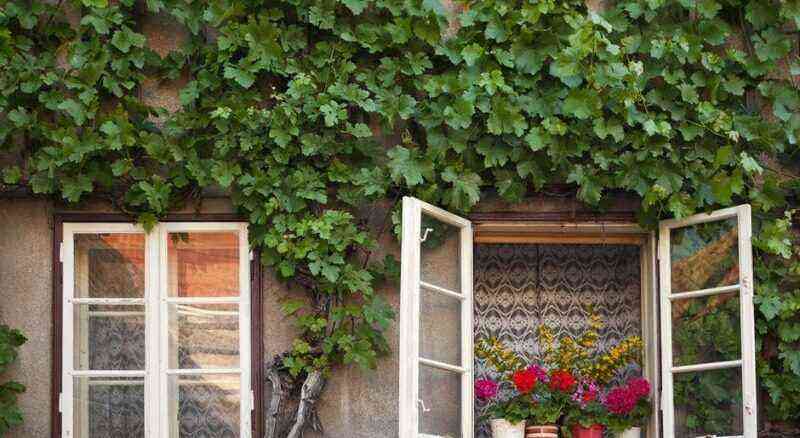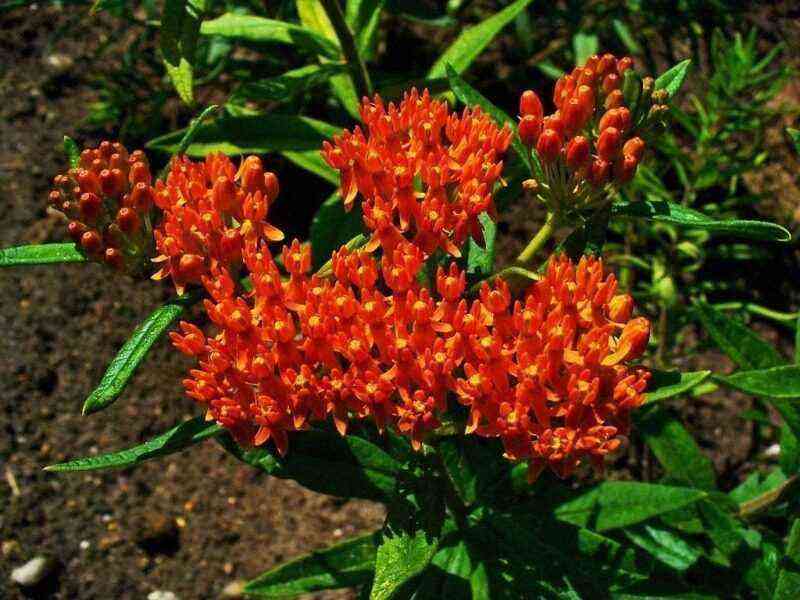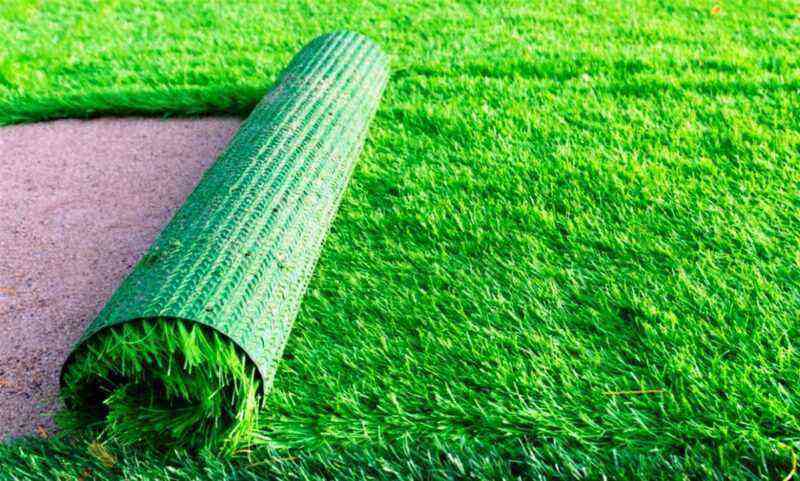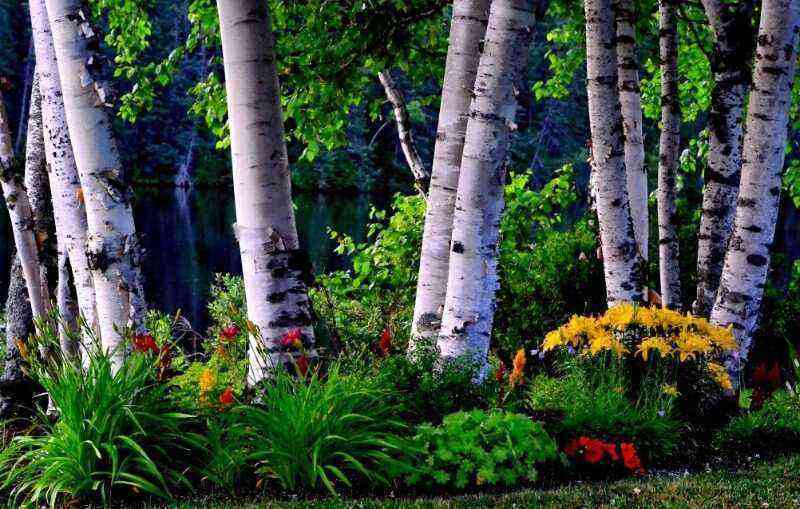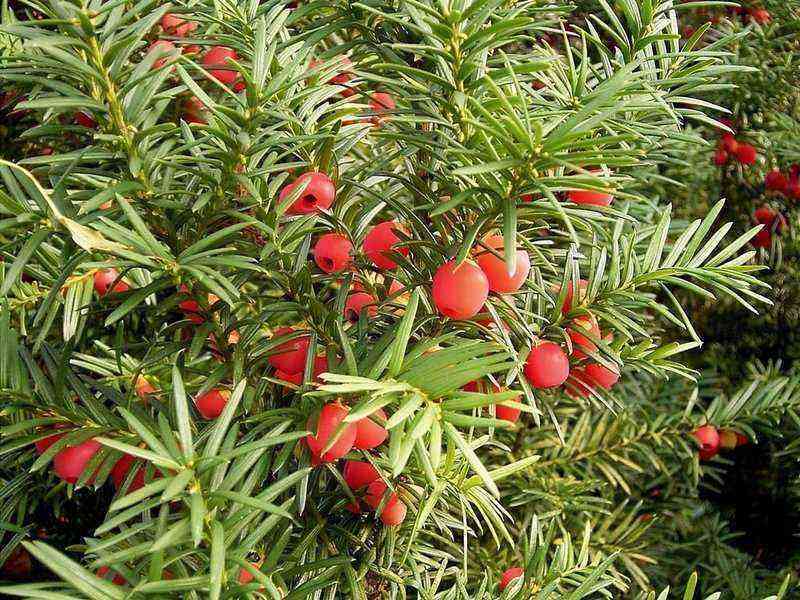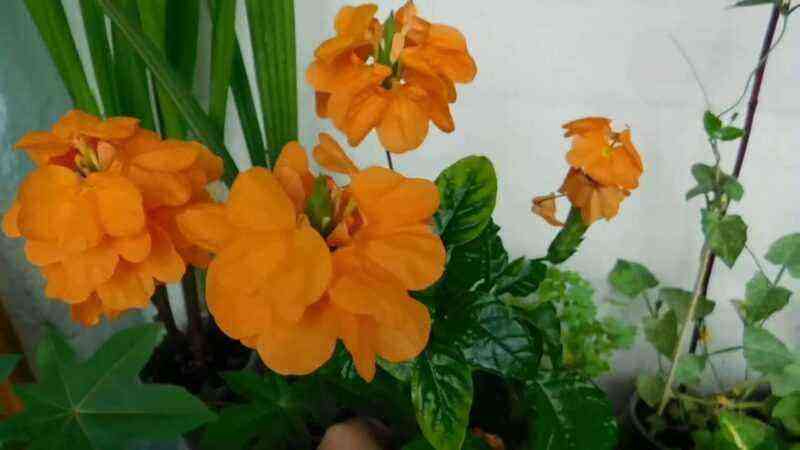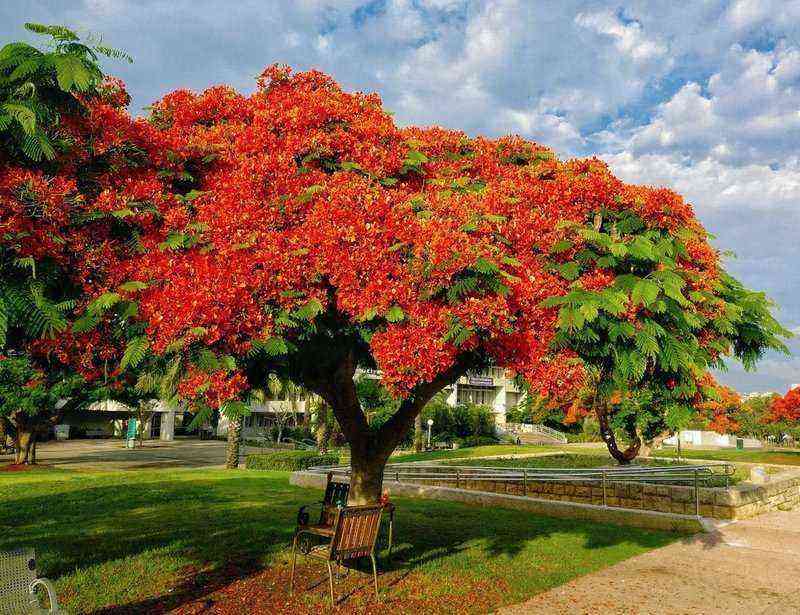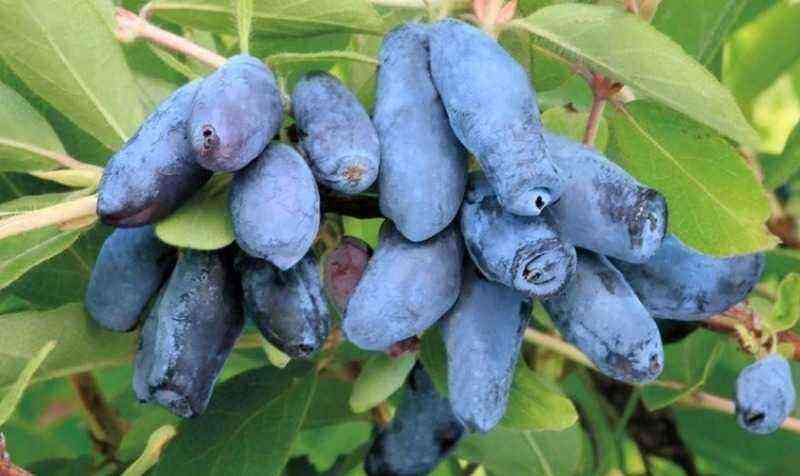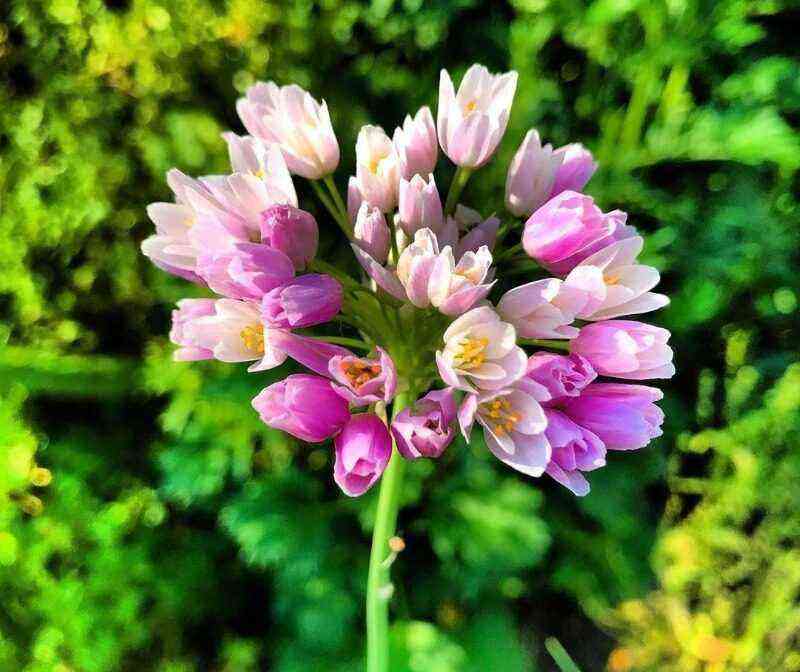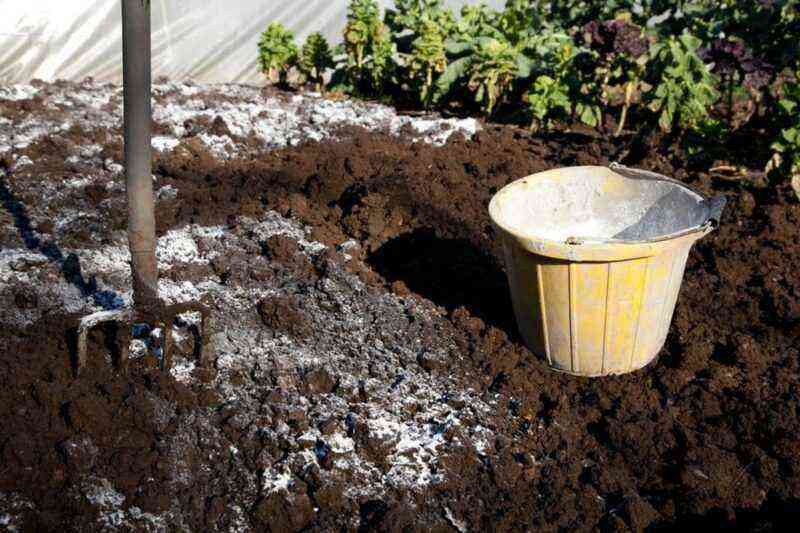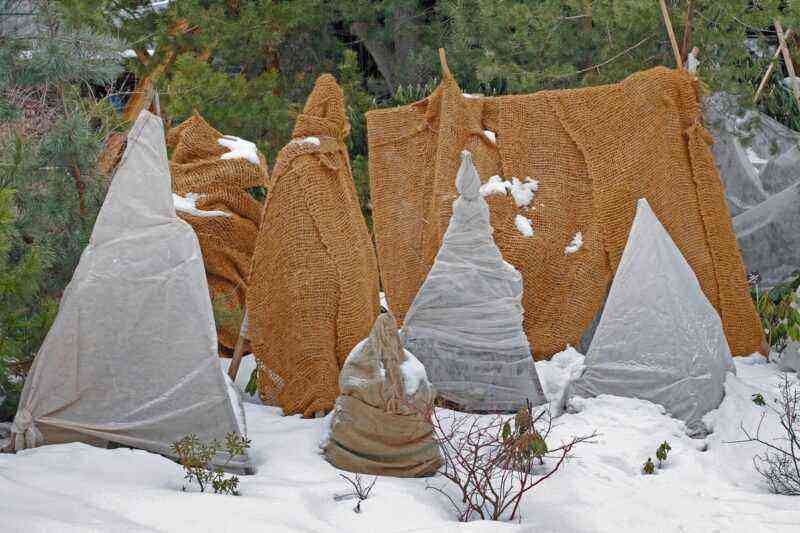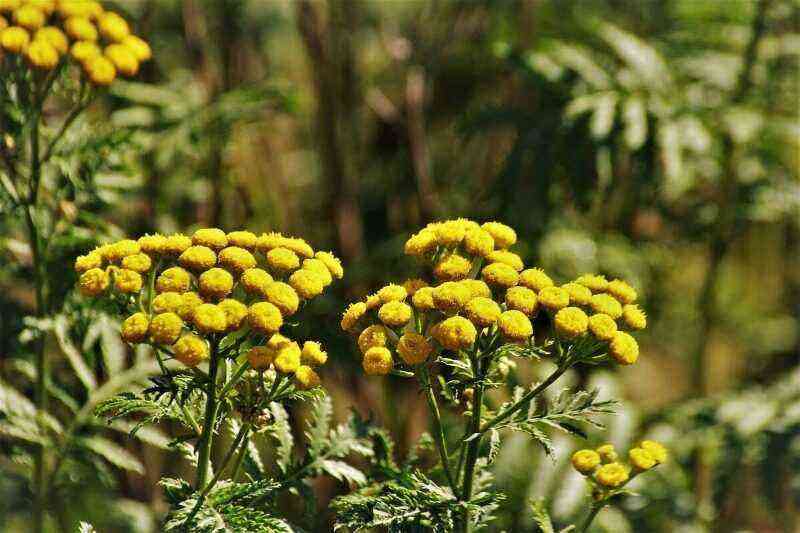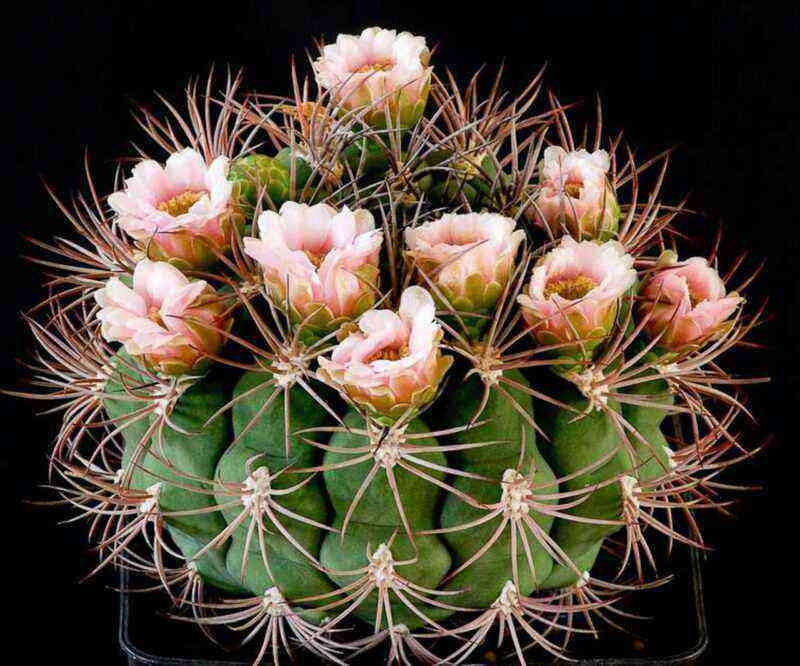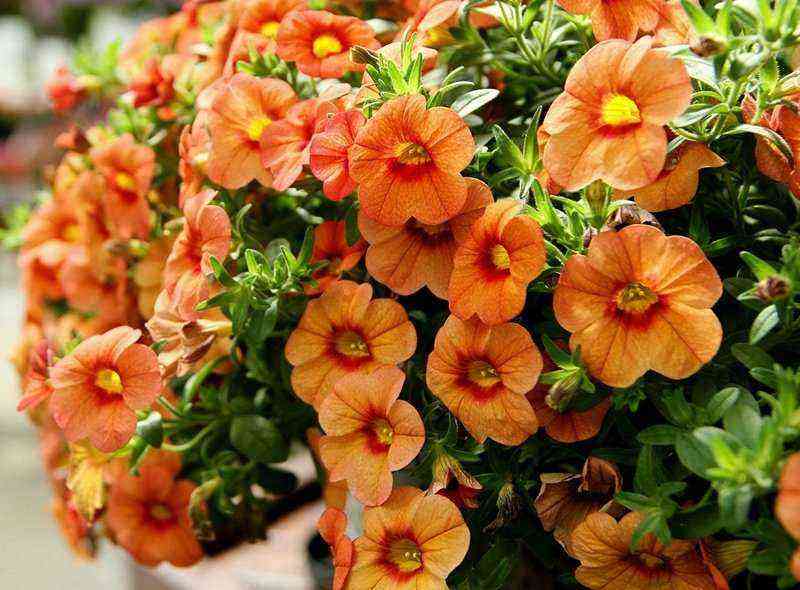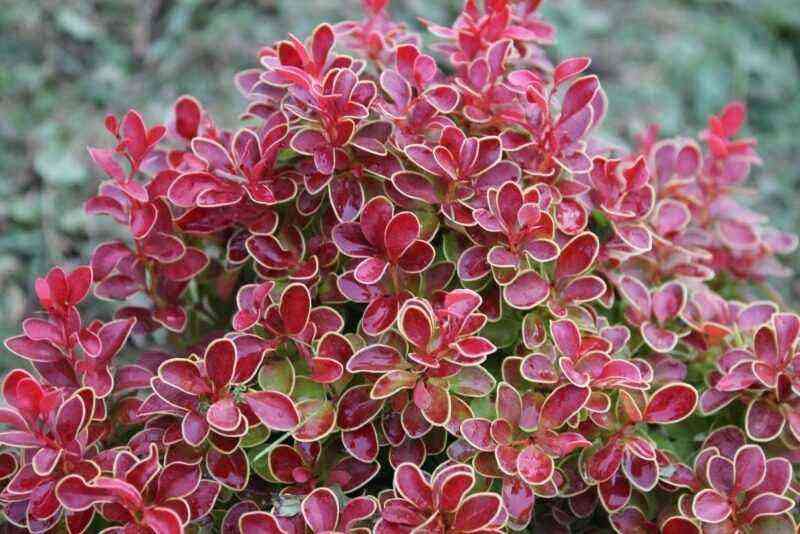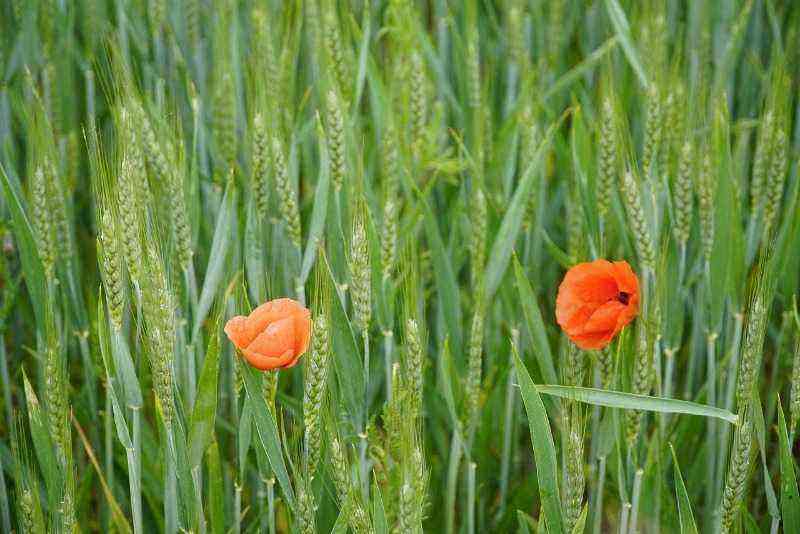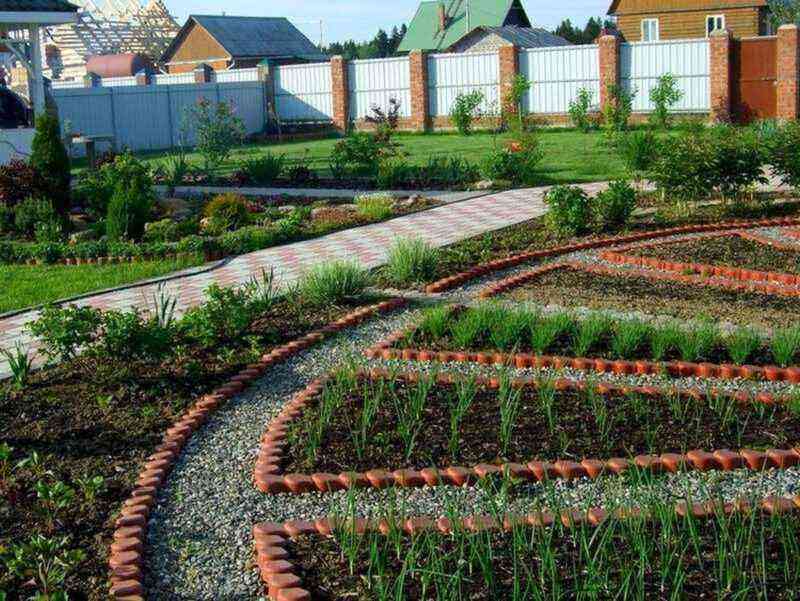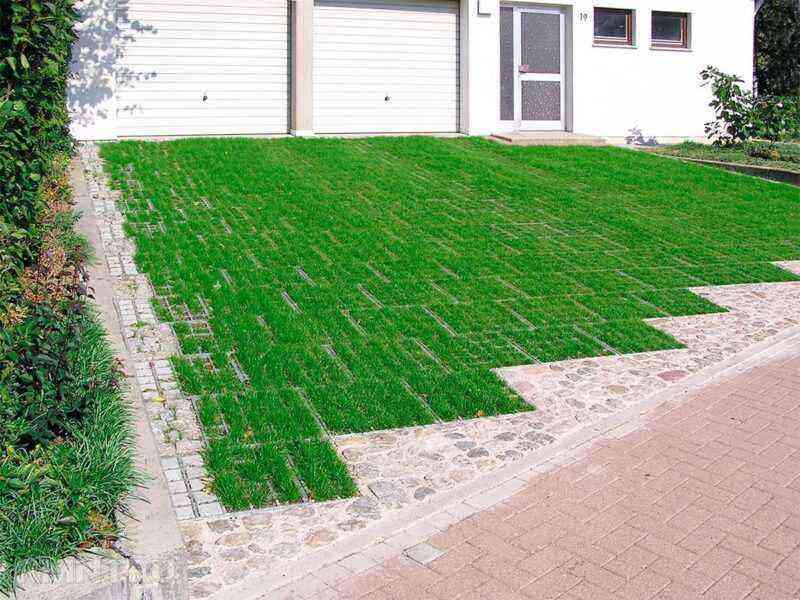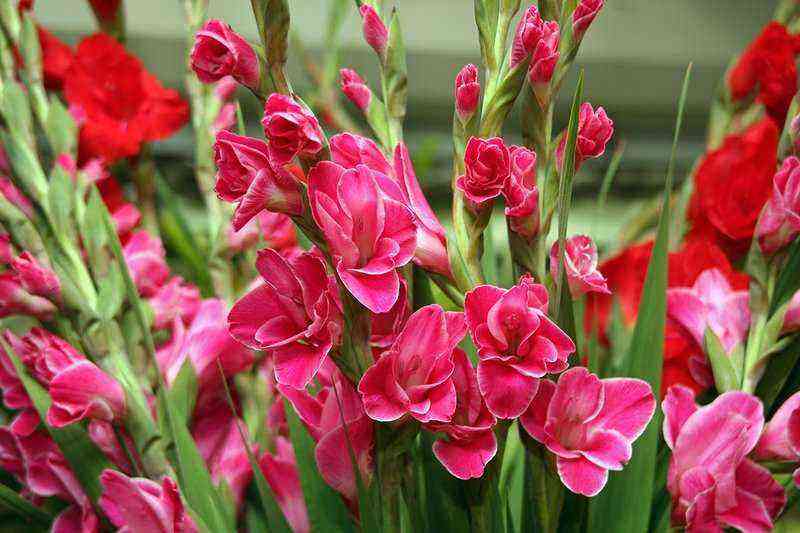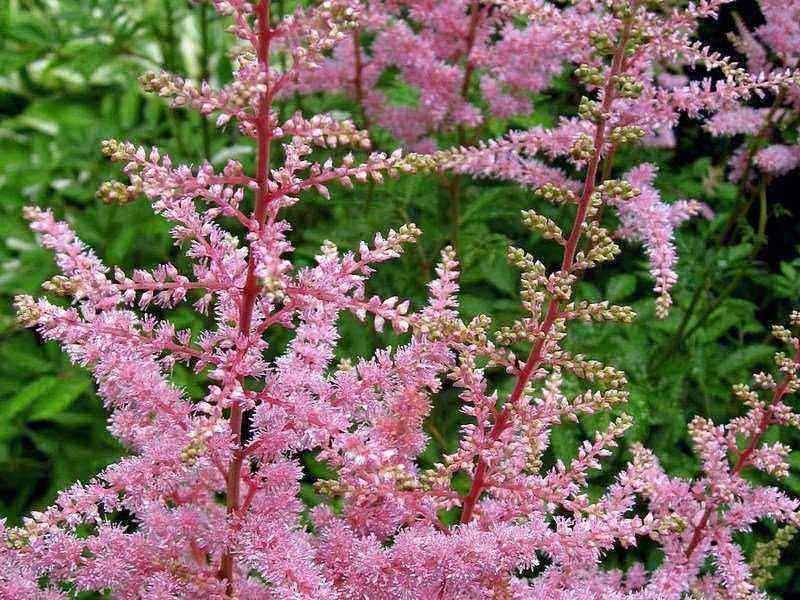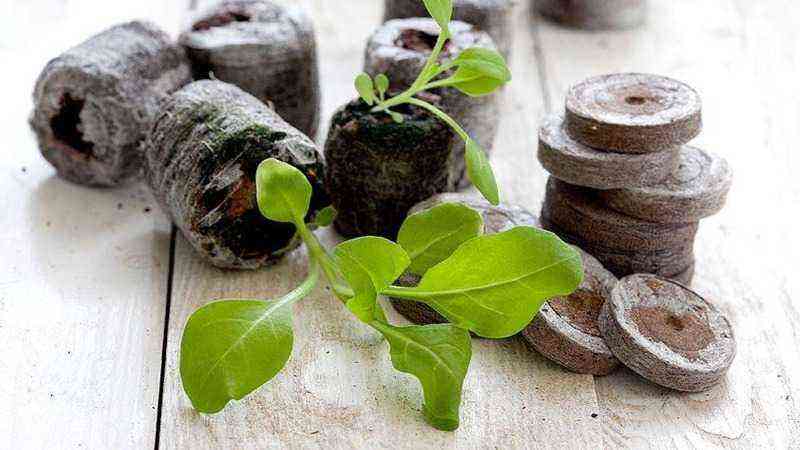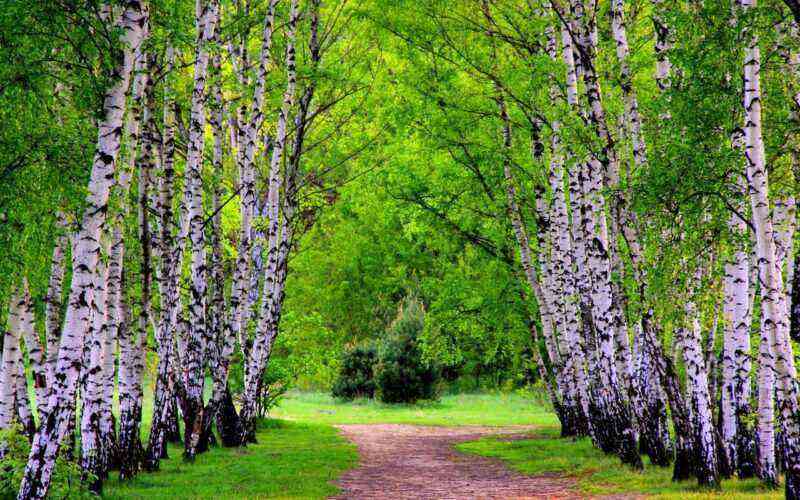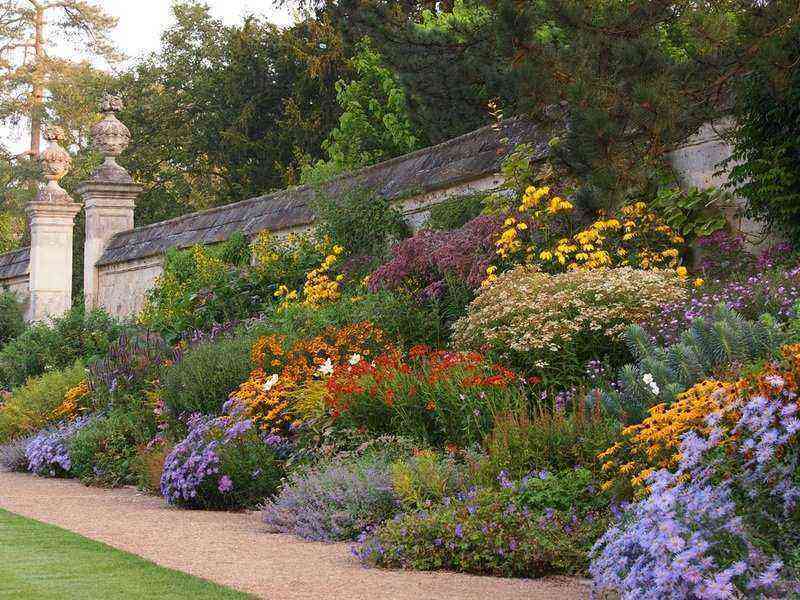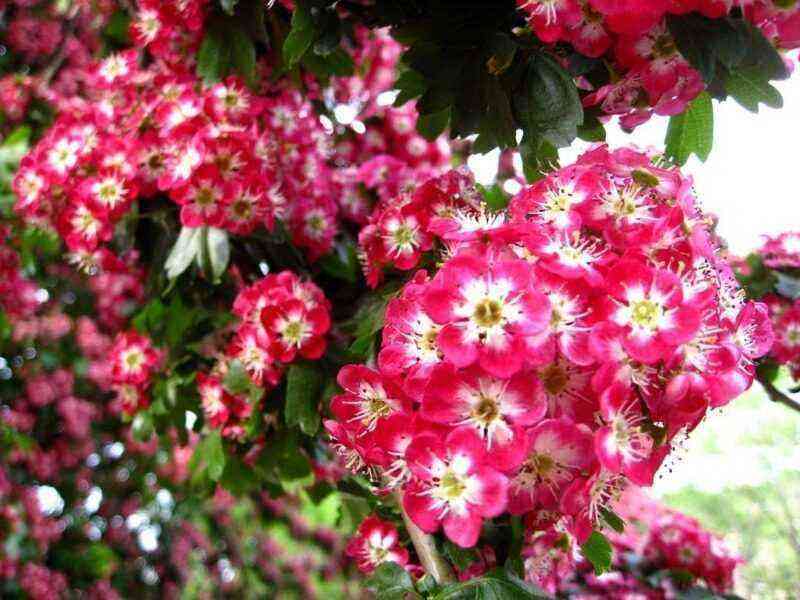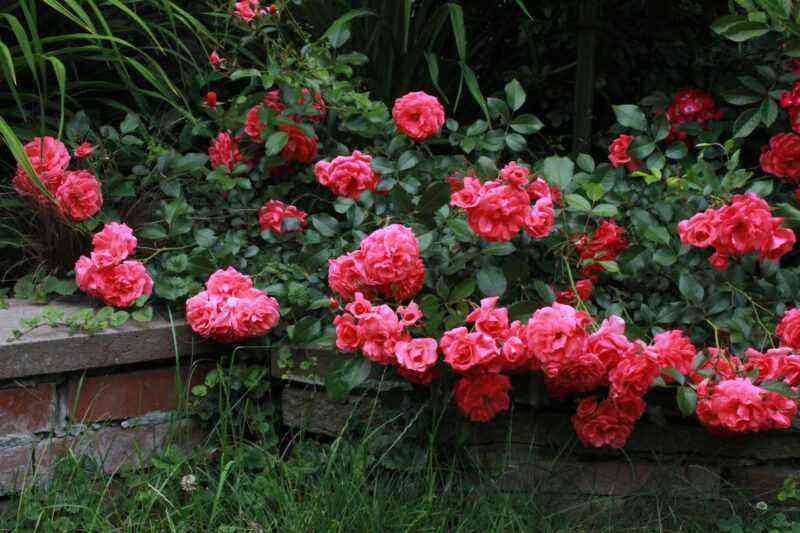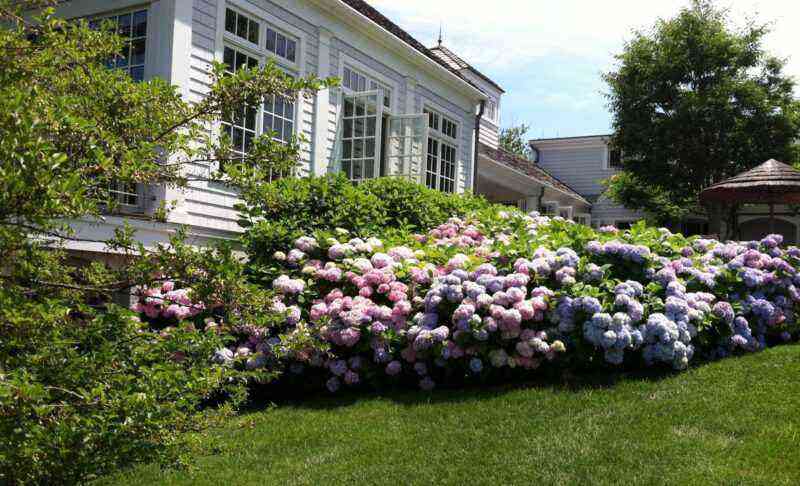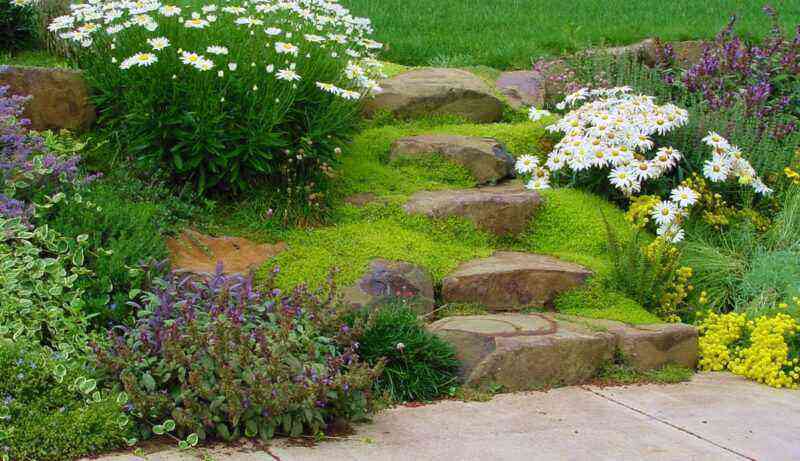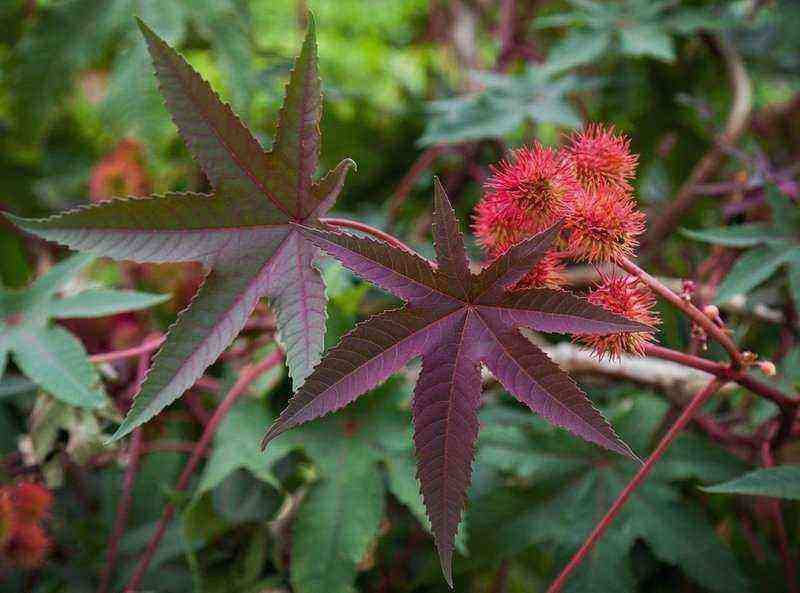The nature of the Far East is rich in a variety of vegetation. At the same time, many crops do well in central Russia, which makes it possible to grow unusual Japanese plants on their site. Also a fashionable design trend is the Japanese-style garden, which is loved by many gardeners of a temperate climate.
Japanese iris
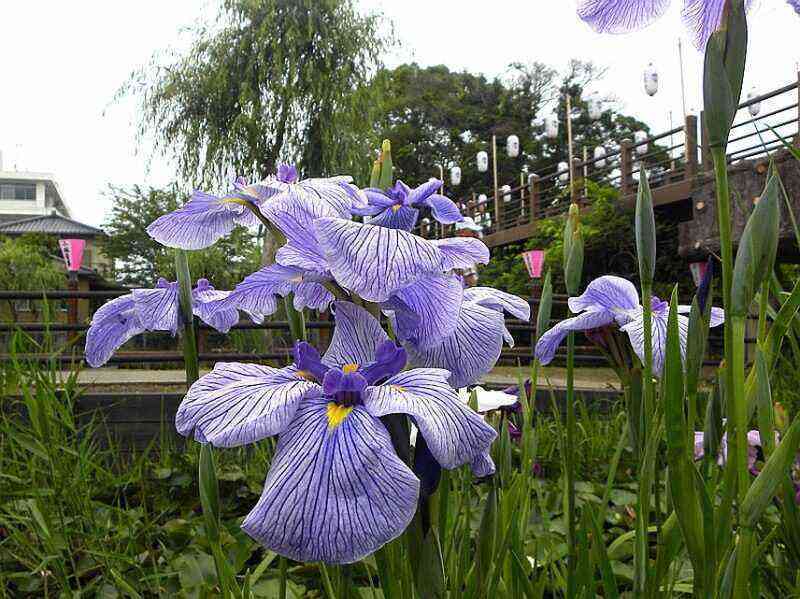
It is a perennial herb that grows naturally in the forest edges of China, Myanmar and Japan. This unpretentious and hardy culture rarely gets sick, tolerates drought calmly and needs watering only during the flowering period.
Japanese iris grows up to 1 meter in height, its long xiphoid leaves are 25 to 60 cm long, and up to 3 cm wide.The foliage is colored dark green or emerald white, and the base of the plant has a burgundy brown tint.
The large flowers range in diameter from 14 to 25 cm and consist of three outer petals and smaller protruding inner perianths. The spectacular delicate flowers are lilac, whitish blue, pink or white with blue and yellow markings.
To plant Japanese iris, you need to choose a well-lit area, away from tall trees, only light partial shade is permissible. Iris will grow well in loamy soil, with a slightly acidic or neutral reaction. The culture does not tolerate contact with potassium, therefore it is not recommended to plant it in the soil into which lime was introduced. Irises love soft rainwater, to retain it around the garden beds are formed, but waterlogged soil is harmful to the plant, so you need to provide a drain for excess water.
Japanese trichozant

An annual herbaceous vine, whose pumpkin fruits look like a serpentine cucumber, twisted in a spiral or ring. The plant grows in tropical and subtropical climates and is eaten by the locals as green vegetables.
Its thin stem reaches 3-4 meters in length, its leaves have 3 to 7 lobes. Snow-white flowers with a diameter of about 4 cm outwardly resemble snowflakes, unusual long filamentous processes, twisting into a spiral, extend from their petals. Towards evening, the flowers begin to emit an extraordinary delicate aroma with notes of jasmine, reminiscent of an expensive perfume.
The fruits of the trichozant reach up to 1 meter in length and 10 cm in width, and as they ripen, light stripes appear on them. They are covered with a thin skin, their flesh is white, tender and slimy. The fruits of the Japanese trichozant variety at the ripening stage acquire red-orange hues.
The harvest of this fertile culture is eaten unripe; young fruits taste like a crunchy cucumber with a sweet radish flavor. The Japanese trichozant is planted in open ground no earlier than June 10, since the plant is thermophilic and does not tolerate cold snaps. If the temperature reaches less than +10 degrees, the vine dies. Therefore, it must be planted in the sunniest and warmest place, preferably near the southern wall of the house.
Pukhan rhododendron

It is a densely branched shrub with a natural habitat in Korea and Japan. The bush reaches 60 cm to 1 meter in height and has a lush crown. Its narrow, oblong leaves 3 to 8 cm long are dark green in summer and take on a brighter shade in autumn.
Fragrant flowers of rhododendron are collected in inflorescences of 2-3 corollas with a diameter of about 5 cm. They have a wide-funnel shape and pale lilac-purple petals with brown specks. The flowering is abundant and lush, begins in June and lasts 25 days, a healthy shrub is completely covered with flowers.
The level of humidity is very important: you need to water the plant quite often and only with soft water. The land should be well saturated, but stagnant water should be avoided. Rhododendron will thrive in moist, loose, slightly acidic or neutral soil. It has endurance and high frost resistance; in winter, a light shelter from dry leaves is enough.
Japanese larch

A deciduous coniferous plant of the pine family, it grows in some regions of Siberia, Sakhalin and Japan. It reaches a height of 35 meters, and the trunk diameter is from 50 to 100 cm. The tree is long-lived and can live for 500 years.
Its long, thick, almost horizontal branches form a wide-pyramidal crown. They are covered with shiny blue-green needles, reaching 5 cm in length, in autumn they are painted in bright yellow shades.
Japanese larch cones have a spherical shape and are painted in greenish tones; on the tree they persist up to three years and form small light brown seeds. A fast-growing tree annually adds 10-15 cm in width and 25 cm in height, it is resistant to diseases and pests.
Larch has a deep root system, which provides it with high wind resistance. It is recommended to plant a tree at a depth of 70-80 cm. During the summer heat, young seedlings should be watered 1-2 times a week, loosened and be sure to remove weeds.
Japanese maple
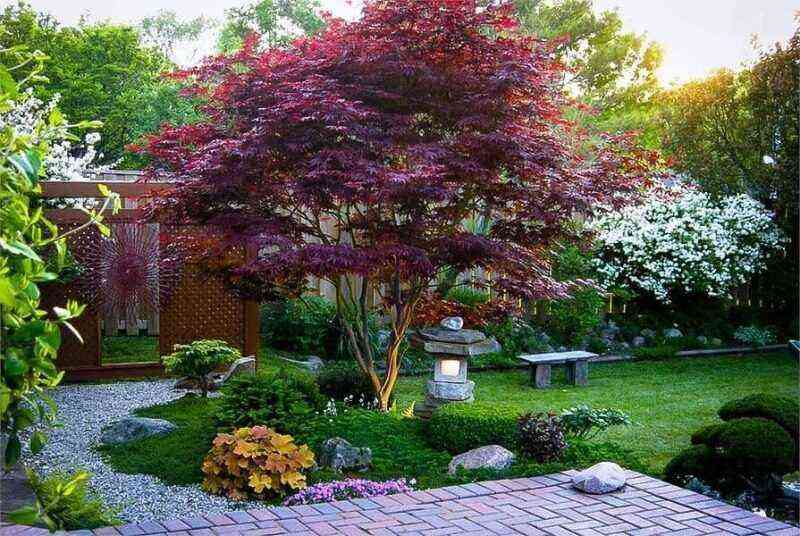
The deciduous tree is found naturally in the Japanese islands of Hokkaido, Honshu and Kyushu, as well as in South Korea. Japanese maple grows very slowly, it does not exceed 10 meters in height, has a luxurious wide crown and bright foliage.
Crohn is able to change its color over the seasons. Depending on the species, the leaves can have a different shade – purple, green, red, pink, golden or orange. Large leaves up to 15 cm in diameter are dissected along the edges and have from 7 to 11 lobes.
Maple blooms in May with small red or yellow-green flowers. To plant a maple, you need to choose a sunny place, a little shaded and protected from the winds, the plant also needs a nutritious soil. The tree can withstand frosts down to -20; in the open field in winter, the heat-loving maple definitely needs shelter.
